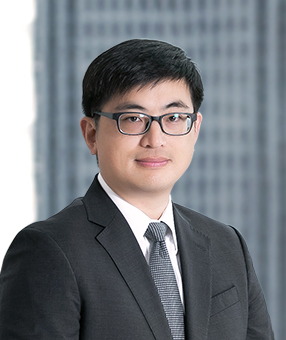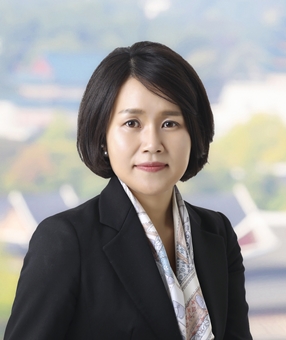In a pair of recent decisions, the Supreme Court confirmed that the scope of a pharmaceutical compound patent covers generic prodrugs using an ester form of the patented compound as well, while the Seoul Central District Court further ruled that a generic prodrug is within the scope of the pharmaceutical compound patent even during the patent term extension (PTE) period.
These are the first decisions in Korea to interpret the scope of a pharmaceutical compound patent as compared to a prodrug of the pharmaceutical compound. A "prodrug" refers to a compound that is broken down into the original active ingredient in the human body, and shows pharmacological activity through the active ingredient. Prodrug forms of active ingredients are commonly used in the pharmaceutical field if there are issues using the active ingredient itself as a commercial drug, such as low bioavailability.
In April 2018, Dong-A ST filed a scope confirmation action at the Intellectual Property Trial and Appeal Board (IPTAB) against AstraZeneca's compound patent covering dapagliflozin, the active ingredient of its blockbuster type II diabetes drug Forxiga®. Dong-A ST claimed that their product used "dapagliflozin formate," a prodrug form of dapagliflozin, and argued that their product was outside the scope of AstraZeneca's patent. While the IPTAB ruled in Dong-A ST's favor, AstraZeneca appealed to the Patent Court (now called the IP High Court), and the Patent Court reversed the IPTAB ruling and determined that Dong-A ST's prodrug was indeed within the scope of AstraZeneca's patent. Dong-A ST further appealed this ruling to the Supreme Court, but the Patent Court decision was ultimately upheld in February 2023.
The Supreme Court ruled that dapagliflozin formate was within the scope of equivalents of AstraZeneca's pharmaceutical compound patent, based on the following analysis:
1) As an initial matter, where a product contains features different from a patent, whether the difference would have been an "easy modification" for purposes of evaluating infringement or scope under the doctrine of equivalents (DOE) should be determined as of the time the determination of scope is made, not when the patent application was originally filed. As such, the Supreme Court rejected Dong-A ST's argument that only evidence from prior to the patent application could be considered, and held instead that whether one of ordinary skill would have found a particular modification of the patented features easy to conceive can be based on evidence publicly disclosed after the patent application was filed.
2) It would have been easy for one of ordinary skill in the art to conceive of modifying dapagliflozin into dapagliflozin formate, given that it is well-established to design a prodrug by selecting a hydroxy group on the original compound to replace with an ester through chemical modifications, the location where the formate group was substituted in dapagliflozin formate would have been easily chosen, and it would have been easy to select formic acid to use to develop dapagliflozin into a prodrug.
3) While the applicant amended the claims of the Subject Patent to delete the term "prodrug ester" during the prosecution, this is difficult to interpret as consciously excluding dapagliflozin formate from the scope of the Subject Patent in view of the applicant's intent as indicated in the amendment and opinion submitted by the applicant during the filing process, and the reasons for the amendment.
Subsequently in November 2022, AstraZeneca filed for a preliminary injunction against Dong-A ST's prodrug product at the Seoul Central District Court, and on March 16, 2023, only two weeks before the patent expiration date, the Seoul Central District Court granted the preliminary injunction. This is significant because the original term of the patent had already expired in October 2020, and the PTE term was limited to covering the first approval of dapagliflozin only (on which the PTE was based). Nevertheless, the Seoul Central District Court ruled that Dong-A ST's product was within the scope of AstraZeneca's compound patent even during PTE.
The Supreme Court held in a previous case (the "Vesicare®" case) that the scope of a patent during PTE was not strictly limited to the specific form of the product in the approval. In that case, the patent claimed the compound solifenacin, but the approval on which the PTE was based was for solifenacin succinate, while generics tried to argue that their solifenacin fumarate products were therefore outside the scope of PTE. The Supreme Court held that the specific salt form of the approved compound was not determinative, but that patent scope during PTE must be determined in view of the active ingredient, therapeutic effect, and use of the approved product underlying the PTE as compared to the generic product.
In this case, the main issue was whether the active ingredient of Dong-A ST's prodrug corresponded to dapagliflozin, or to dapagliflozin formate. The Seoul Central District Court held that the active ingredient in the prodrug expected to have a therapeutic effect was dapagliflozin, not "dapagliflozin formate," given that "active ingredient" generally refers to an "ingredient that is absorbed into the human body and expected to have a 'treatment effect' for a particular disease through its pharmacological action"; Dong-A ST's prodrug was converted into dapagliflozin in the human body and showed the same pharmacological effect as Forxiga; and Dong-A ST's product was approved on the basis of bioequivalence test results confirming that the blood concentration of Dong-A ST's prodrug after administration was equivalent to that of Forxiga.
These decisions clearly enhance the scope of pharmaceutical compound patents in Korea, by affirming that prodrugs of a patented compound should generally be within the scope of the compound patent in Korea even during PTE, and clarifying that "ease of modification" of elements for DOE purposes should be determined at the time of the infringement, not the filing date of the patent.
Related Topics







